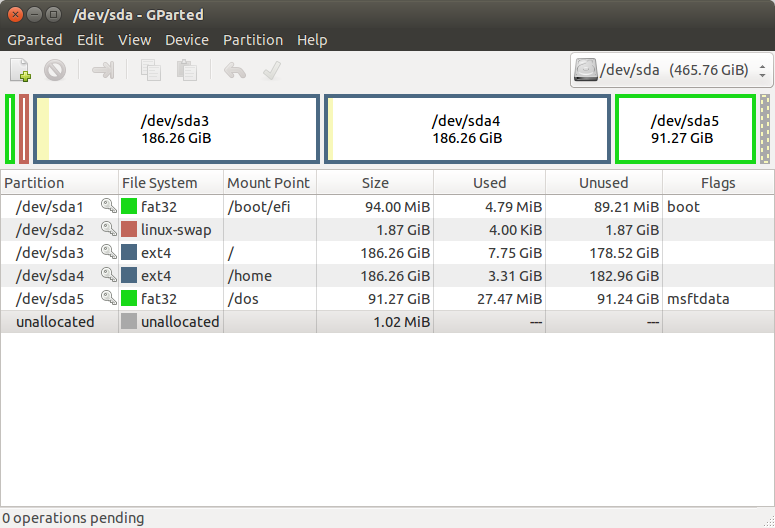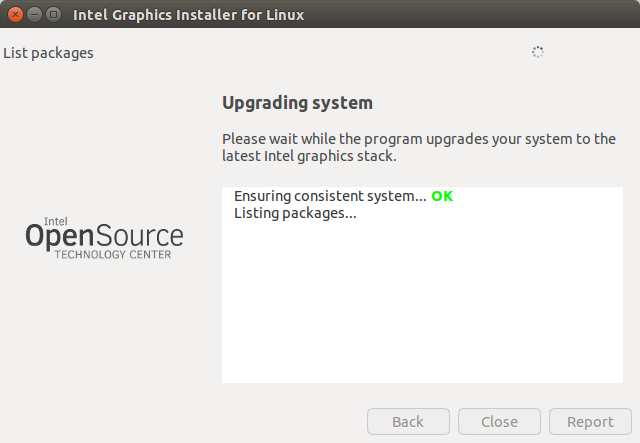Ubuntu 14.04 on Asus X200MA
Lyrics
I dreamed to buy an Asus laptop 10 years ago, when I was a young engineer with an in-line and without an I / A in one scientific research institute producing special-purpose items. According to legend, civilian radar.
In those days, the laptop was more of a luxury than a tool for solving everyday tasks and even had a hint of status. Laptops were issued to some chiefs and especially valuable specialists, who tirelessly perfected hardware and software systems on constant business trips.
Then it was worth the pleasure of 20 thousand rubles, the lending boom was ahead, there was no question about the 0-0-0-24 programs, and you could only dream about a laptop in the coin of the chervonets. Moreover, at that time there was still a strong influence of the ideas of an “upgrade”, in the sense that you can buy a minimal set, and then add what you need. For example, vidyuhi more powerful or more hard drive. Therefore, I bought the usual “box” with a pot-bellied 15 "CRT monitor.
')
I wanted to have a laptop with an ubunta on board for the last 5 years, since I was playing from 8.04-9.10 on my then new computer (but also stationary). It was around the same time that the netbook boom began and I had already reserved it in the Eldorado 10 "EEE-shku on the stock for 8 sput. But something then prevented, and then the young family and children devoured all my time and money. Well, in some The moment turned out to be a classic "I have the opportunity, but I have no desire."
Having a tablet with Ubuntu never dreamed of.
And so, just the other day, a chain of random events occurred that made me the proud owner of a 12 ”Asus X200MA netbook, which I installed Ubuntu on.
Flour choice
In general, at work, I have a 12 "Asus EEE1225C, which has proven itself as a utility machine for working outside the main laboratory. Small size, weight about 1 kg, a battery for 7-8 hours in office mode - ideal for" sewing typewriter "(equipment programmer) or logger when debugging outside the home room. And even if you wish, you can even work on it, unlike 10" postcards of the first wave with an obscene resolution of 1024x600. This option suited me all, except for the price of about 15 thousand rubles and the Atom processor, which was badly pulled by the very necessary Minecraft application ... Well, at the moment they are no longer sold.
Recently, a colleague brought an “on look” Asus X200CA with a Core i3 and a touch screen. I held it in my hands, “and it was all a truncated” ... I decided to see how much it cost. The same tag. But X200MA - without a touchscreen and with a simpler processor - already 11450. Below the psychological threshold. Moreover, it turned out that the tablets with Win8.1 compete with the netbooks of the previous generation in terms of parameters and the current ones for the price. The transformers Asus T100 and Acer Aspire Switch 10 seemed especially interesting. The main issue was the installation of Ubuntu, because Windows on my personal device was sickened by religious convictions. Actually, a fierce election campaign unfolded around this trinity.
I found out that Asus X200CA is “Ubuntu certified for OEM”, for some reason I decided that MA too. I read on the Internet, it seems there are problems, but more / less solvable.
About T100 in terms of Ubuntu on the Internet were only questions, and I strongly ventured to be among the pioneers with vague prospects, in addition to the risk of “ripping” the device. (There are such horror stories about UEFI / Secure boot). Well, Acer is also about the same way. Plus, I read negative reviews about acer and strange references to the T100 transformer's self-tach touch panel, which, coupled with the price of 16-18, did not add enthusiasm.
As a result, under the influence of Friday beer, I wrapped it in the nearest DNS and resolutely bought a new pet - Asus X200MA with a black FreeDOS instead of an operating system.
Go
The first day.
Fun with FreeDOS was enough for a few minutes, because, not finding there even a hint of any Commander a la NC, mc or vc, and also not finding a way to mount a USB flash drive, he firmly decided to demolish this UG to the World Cup.
The next blow of fate awaited me when I tried to boot from a USB flash drive with a Ubuntu 14.04 i386 image. Grub had the standard versions of “Try Ubuntu” and “Install Ubuntu”, but when choosing, FreeDOS was loaded again.
My personal specificity is that the computer is in the children's room at home, and I did my fuss after it went off, so I could only use what I had in advance. Naturally, I did not have a spare image of Ubuntu 64, which, as it turned out, is the only acceptable with the UEFI bootloader.
Second day.
I downloaded Ubuntu 14.04 amd64, made USB BootFlash.
Download, select “Try Ubuntu” ... And a black screen. I asked Google, read the forums, found that I need to change the Grub “quiet splash” parameters to noacpi nomodeset, but it is better to flash the BIOS to the latest version. Who would know how to change the parameters of grub ...
Third day.
When downloading accidentally noticed at the bottom of the screen "Press E to edit ..." Here it is!
Changed the necessary parameters, and it went. After a couple of minutes I’ve already driven in the Wi-Fi name and password to feel like a full-fledged member of the Internet community.
The only side effect is the resolution of 800x600 instead of the native 1360x768. But it was already a small victory.
He climbed on asus.com, downloaded the latest firmware, placed it on a flash drive, tried to flash the BIOS from the BIOS service menu. As mentioned earlier, external media are not mounted and are not available. The time was already late, I went to sleep.
Day four.
Once again, "podhachiv" grub, launched the full installation. Before that, I studied a little materiel. It seems to be pretty simple. Instead of the MBR, in the case of UEFI, a special EFI partition of 100MB in size with FAT32 formatting is created on the disk. Then everything is as usual - the swap partition, the root partition and personally I always separate / home into a separate partition in order to not have problems reinstalling / updating the system. At the end of the 500GB disk, 100GB is left, which I broke into FAT32 and called / dos. As it turned out, for good reason. To this section, I subsequently dropped the BIOS firmware, which was subsequently successfully flashed and eliminated the initial problems with booting.
Here's what happened in the end:

It seems to be all right, and minecraft was beautifully wound up even with shaders, but with an edge of my ear I heard somewhere that you can install a proprietary Intel video driver in order to eliminate a small joint in the form of a blinking pixel strip in the upper left corner. Since this bar is on the very border of the screen, it is almost imperceptible, and I probably would not have seen it. But, knowing about it in advance, of course, I saw and decided to fix it.
Having noticed the magic script on the Internet, during the black magic session (in the terminal window) I installed the Intel i915 driver. If someone tells you a scary story about the fact that to install the driver you need to rebuild the kernel ... yes, the way it is. But this is no more difficult than the usual installation, because it happens in automatic mode.
Here is the same set of magic spells, which I stuck Intel's driver into my system:
$ mkdir ~/tmp $ cd ~/tmp $ sudo -E echo "deb https://download.01.org/gfx/ubuntu/14.04/main trusty main Intel Graphics drivers" | sudo tee /etc/apt/sources.list.d/intellinuxgraphics.list $ wget --no-check-certificate https://download.01.org/gfx/RPM-GPG-KEY-ilg $ wget --no-check-certificate https://download.01.org/gfx/RPM-GPG-KEY-ilg-2 $ sudo apt-key add RPM-GPG-KEY-ilg $ sudo apt-key add RPM-GPG-KEY-ilg-2 $ sudo apt update $ sudo apt install i915-3.15-3.13-dkms $ sudo apt install intel-gpu-tools $ sudo apt upgrade $ sudo reboot $ sudo apt purge xserver-xorg-video-intel Unfortunately, something went wrong, and I started a slide show even on the desktop, but the artifacts were gone.
But it turned out that everything has long been at its best: https://01.org/linuxgraphics
As they say, "sit back in your chair until the system adjusts itself."

In general, that's all, it remains to adjust to taste, hang on the desktop of cats (I have funny mushrooms), download the necessary applications and enjoy working in a convenient environment. Small spoons of tar - functional brightness adjustment buttons do not work (do they even need them?) And, according to rumors, a card reader. But he himself is a bit crooked, and the card, when taken out, clings to something securely. But this, again, is completely solvable questions.
Dry residue
So, not the fastest gas like me, a confident win / lin user and a little programmer embedded on duty, managed to turn an ordinary-looking device with a black Fridos screen (which nobody noticed in the store) into a paint player and a pleasant in all respects Ubunton netbook.
For this it was necessary:
- Download the image of Ubuntu 14.04 amd64 and upload it to the boot-flash;
- When loading, change the grub parameters to avoid a black screen;
- In the installation process, split the disk into sections, not forgetting about efi;
- On one of the FAT partitions, put the pre-downloaded BIOS firmware, which you select and flash from the BIOS service menu during the next reboot;
- Install branded driver Intel Graphics.
And finally, some dry statistics.
yuriy@Yuriy:~$ inxi -b System: Host: Yuriy Kernel: 3.13.0-36-generic x86_64 (64 bit) Desktop: Gnome Distro: Ubuntu 14.04 trusty Machine: System: ASUSTeK (portable) product: X200MA version: 1.0 Mobo: ASUSTeK model: X200MA version: 1.0 Bios: American Megatrends version: X200MA.501 date: 07/09/2014 CPU: Dual core Intel Celeron CPU N2815 (-MCP-) clocked at 532.00 MHz Graphics: Card: Intel ValleyView Gen7 X.Org: 1.15.1 drivers: intel (unloaded: fbdev,vesa) Resolution: 1366x768@60.1hz GLX Renderer: Mesa DRI Intel Bay Trail GLX Version: 3.0 Mesa 10.2.2 Network: Card-1: Qualcomm Atheros AR9485 Wireless Network Adapter driver: ath9k Card-2: Realtek RTL8101E/RTL8102E PCI Express Fast Ethernet controller driver: r8169 Drives: HDD Total Size: 500.1GB (1.0% used) Info: Processes: 171 Uptime: 18 min Memory: 580.6/3840.5MB Client: Shell (bash) inxi: 1.9.17 Thank you for your attention, good luck.
PS:
Add more sources of inspiration. Suddenly, someone will find something useful for himself.
http://forum.ubuntu.ru/index.php?topic=245406.0
https://www.linux.org.ru/forum/general/10511359
Source: https://habr.com/ru/post/238621/
All Articles